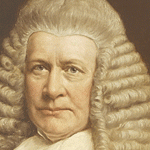1388 - Origins of the Inn
The precise date of the establishment of the Inn is not documented. The first definite reference to Gray’s Inn occurs in 1388.

1530 - First Treasurer
The first Treasurer of Gray’s Inn. The father of Sir Francis Walsingham, Queen Elizabeth’s Principal Secretary, himself admitted to Gray’s Inn in 1552.

1541 - Lord Burghley
William Cecil, later Lord Burghley, was for decades the most powerful man in Elizabethan England as Secretary of State and Lord High Treasurer.
1588 - Armada Screen
The Armada Screen in Hall is believed to contain wood salvaged from a Spanish galleon and was the gift of Queen Elizabeth I (the Inn’s patron lady).
1594 - Comedy of Errors
On 28 December 1594 the first known performance of Shakespeare’s “The Comedy of Errors” took place in Gray’s Inn Hall as part of the Inn’s Christmas festivities.

1600 - The Griffin
Around 1595-1600 the Inn ceased to use the arms of the de Grey family and instead adopted the griffin as its official badge.

1608 - The Walks
The Inn’s gardens, known as ‘the Walks’, were laid out by Sir Francis Bacon in 1608. The Walks today remain one of the largest privately owned gardens in London.

1608 - Sir Francis Bacon
Sir Francis Bacon was elected one of the Inn’s first Benchers and was elected Treasurer of the Inn in 1608 until 1617, when he was appointed Lord Privy Seal.
1611 - King James’s Bible
Of the 47 scholars involved with work on the King James’s Bible, 8 were connected to the Inn.


1649 - The Regicides
Members John Bradshaw and John Cooke or Cook were the judge and prosecutor respectively at the trial of Charles I in 1649.

1684 - Disastrous Fires
In the late 17th century the Inn suffered a series of disastrous fires, which taken together substantially depressed its fortunes, already weakened by the Civil War and the changes in the legal system, and impoverished it for years.

1689 - Sir John Holt
Sir John Holt was Lord Chief Justice from 1689. He declined the Great Seal in 1700 and was particularly influential in ending the prosecution of witches.

1702 - Revd Adam Buddle
Revd Adam Buddle was appointed Gray’s Inn Chapel Reader in 1702. A noted botanist, he had the buddleia named in his honour.

1723 - Gates to the Walks
The present gates to the Walks are erected bearing the initials of the Treasurer at the time, William Gylby or Gilby. The Walks today remain one of the largest privately owned gardens in London.

1783 - Sir Samuel Romilly
Samuel Romilly was one of the most distinguished Inn members of the turn of the 18th and 19th centuries.

1840 - Sir Robert Lush
Sir Robert Lush is particularly remembered as one of the judges in the Tichborne Case of 1873-74.

1891 - Lord Atkin
James Richard Atkin, later Lord Atkin, was called to the Bar in 1891 and developed a great reputation at the commercial Bar. He is particularly remembered for the “snail in the bottle” case.

1893 - Chapel Restoration
The Chapel was restored in a late Gothic style in 1893, which it remained until it was destroyed during the Blitz.

1899 - Lord Birkenhead
F E Smith, later Lord Birkenhead, was equally well-known for his successful career at the Bar and his subsequent political career.

1918 - Winston Churchill
Winston Churchill and Franklin D. Roosevelt first met in 1918 at a dinner in Gray’s Inn Hall.

1920 - Women Admitted
From late December 1919 it was possible for women to be admitted to the Inns of Court. The three first women at the Inn, admitted in 1920, were: Mary Selina Share Jones, Edith Hesling and (Mary) Robina Stevens.

1922 - Dr B. R. Ambedkar
Dr B. R. Ambedkar was a crusader for social justice and was the chief architect of India’s Constitution which secured social and fundamental legal rights and equality for its citizens.
1941 - The Blitz
The Inn suffered extensive damage during the Blitz, particularly in the raid of 10/11 May 1941.

1941 - Frances Claudia Wright
Frances Claudia Wright was the first Sierra Leonean woman to be called to the Bar. She was the first Black woman called by Gray’s Inn and the second Black woman to be called to the Bar of England and Wales.
1945 - Essi Matilda Christian
Essi Matilda Christian was the third Black woman called to the Bar of England and Wales and the first Ghanaian female lawyer.

1955 - Dame Joyanne Bracewell
An eminent champion of family law, Dame Joyanne Bracewell was the High Court judge responsible for drafting, and then overseeing the implementation of the Children Act 1989

1956 - Gesta Grayorum
The “Gesta Grayorum” entertainment was performed in Hall in front of Her Majesty Queen Elizabeth II on 13 November 1956.

1956 - Benedicto Kiwanuka
Benedicto Kiwanuka was the first Prime Minister of Uganda (while it was not yet fully independent). He was the first Chief Justice of Uganda who was a native Ugandan.

1959 - Lord Bingham
Master of the Rolls 1992-96, Lord Chief Justice 1996-2000, President of the Supreme Court 1996-2010.
1960 - Post-War Reconstruction
On 11 May 1960 the rebuilt Chapel was re-dedicated by the Archbishop of Canterbury, the Rt Rev Geoffrey Fisher, thus bringing to an end the Inn’s post-war reconstruction.

1969 - John Anthony Roberts
John Anthony Roberts was one of the first Black barristers to become a QC at the Bar of England and Wales in 1988.

1969 - Lady Hale
Educated at a state school in Yorkshire, Brenda Hale was appointed Professor of Law at Manchester (1986), Queen’s Counsel (1989), Lord of Appeal in Ordinary and Baroness Hale of Richmond (2004) and, in 2017, the first woman President of the Supreme Court.

1969 - Lord Thomas
Appointed Queen’s Council (1984) President of the Queen’s Bench Division (2011) and Lord Chief Justice (2013).

1974 - Sir Terence Etherton
Sir Terence Etherton was the Master of the Rolls (2016) and Head of Civil Justice, the second most senior judge in England and Wales. Britain’s first openly-gay senior judge.

1976 - Dame Nicola Davies
Dame Nicola Davies was appointed High Court judge in 2010, Court of Appeal judge in 2018 and was the first Welsh woman judge in the Court of Appeal.

1981 - Dame Linda Dobbs
Dame Linda Dobbs, a Bencher of the Inn, was the first Black senior judge of England and Wales.

1985 - Rose Heilbron
Dame Rose Heilbron was one of the country’s most famous barristers and the Inn’s first female Treasurer.

1989 - Dame Bobbie Cheema-Grubb
The Hon. Mrs Justice Cheema-Grubb is a judge of the Queen’s Bench Division of the High Court of Justice of England and Wales and the first Asian woman to serve as a High Court judge.

1997 - Expansion of the BVC
The Bar Vocational Course (BVC) (now known as the Bar Course), is expanded to additional providers throughout the UK.

2011 - New Bridge
The new bridge connecting Hall and 10 South Square was completed and the Bridge Bar for Members was opened.

